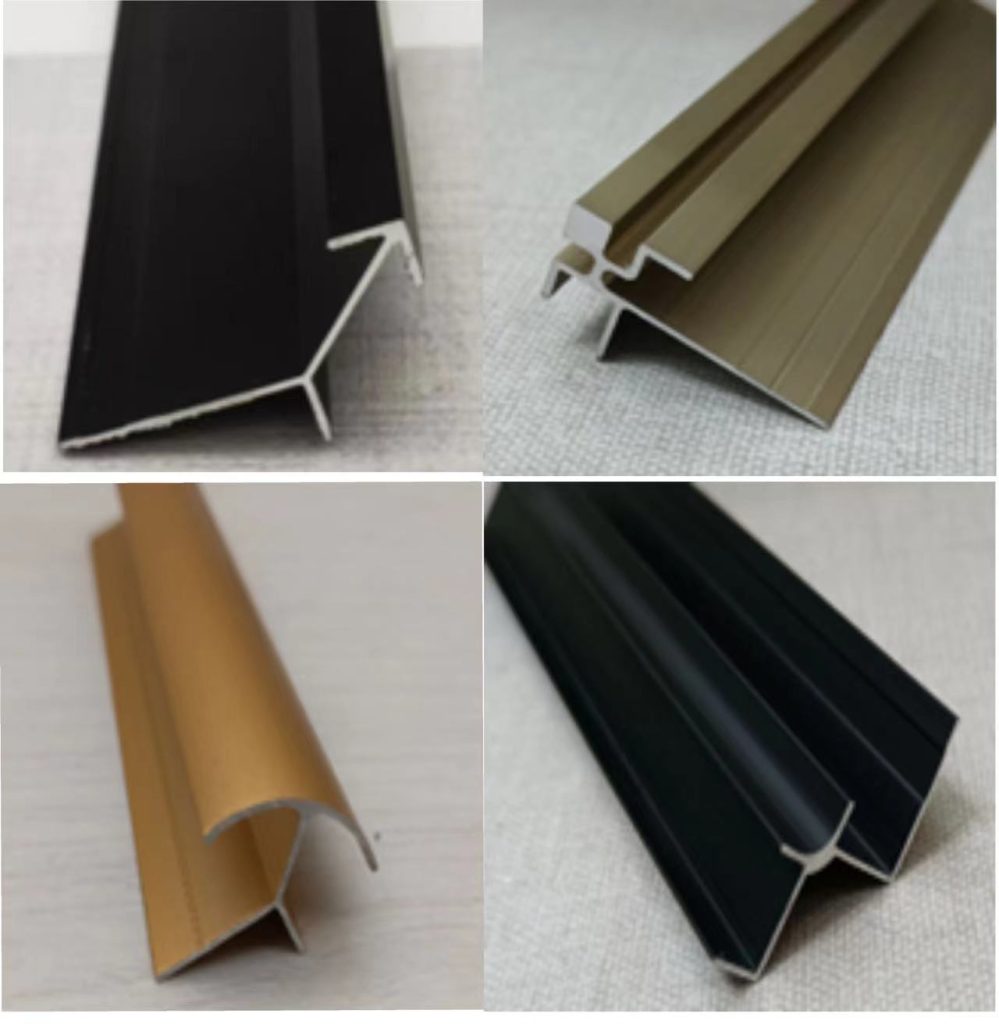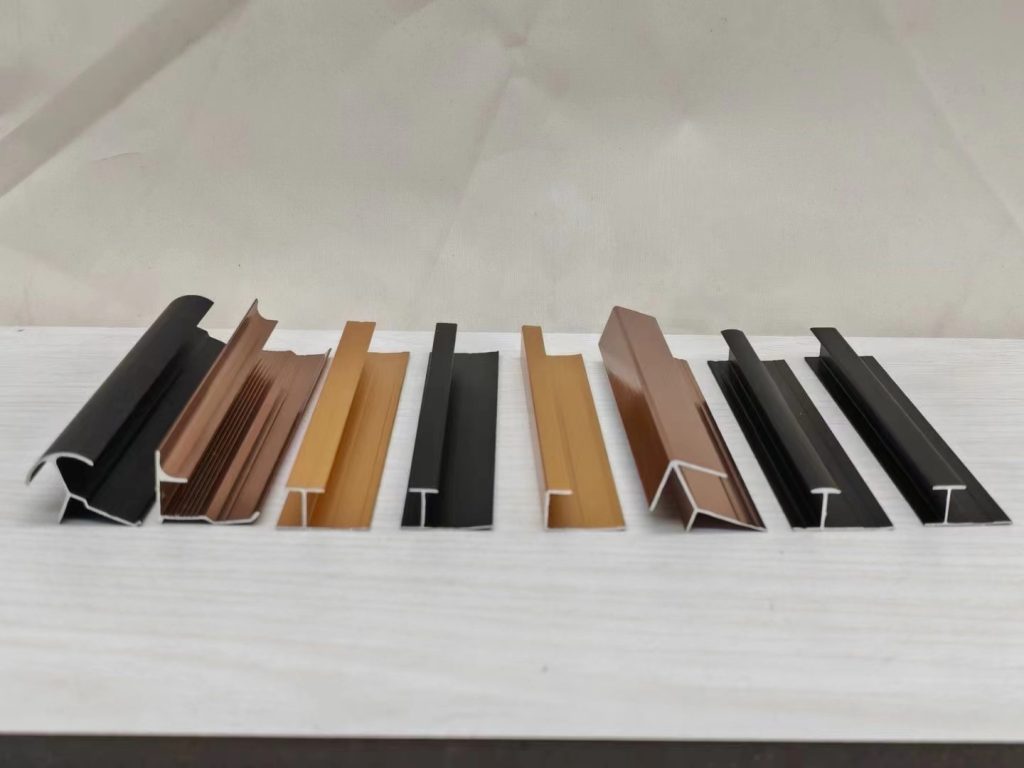Aluminum vs Plastic Edge Trim: Which is the Best Choice?

Are you choosing between aluminum edge trim and plastic edge trim for your project? This guide gives you clear, direct answers.
What are the key differences between aluminum and plastic edge trim?
Aluminum edge trim:
- Offers high strength and durability
- Features a modern, metallic look
- Resists impact and wear in busy areas
Plastic edge trim:
- Provides flexibility and easy installation
- Comes in many colors and finishes
- Costs less and works well for light-duty uses
If you install trim in a commercial kitchen, aluminum handles daily bumps and scrapes. For a DIY shelf at home, plastic trim cuts easily and adapts to curves.
What’s Next? We will compare aluminum and plastic edge trim by:
- Performance
- Appearance
- Cost
- Installation
This breakdown helps you choose the best trim for your needs.
Material Properties and Performance Comparison
Aluminum Edge Trim
Aluminum edge trim uses 6063 aluminum alloy. This material is lightweight and strong. It resists corrosion and does not rust in wet areas.
Aluminum trim holds its shape under impact. It works well in kitchens, bathrooms, and outdoor spaces.
Key Features:
- 6063 aluminum alloy
- Lightweight
- High strength
- Corrosion-resistant
- Maintains shape under pressure
Plastic Edge Trim
Plastic edge trim is usually made from PVC or similar plastics. It is light and easy to cut. Plastic trim offers many color choices and finishes.
Plastic can deform at high temperatures. It ages faster than aluminum and does not resist corrosion as well.
Key Features:
- PVC or similar plastic
- Lightweight
- Easy to install
- Low cost
- Many color options
- Can warp in heat
Choosing the Right Material
Use aluminum trim for areas with moisture or heavy use. Choose plastic trim for simple, low-cost projects in dry spaces.
Ask yourself:
- Will the trim face water or heat?
- Do you need long-term durability?
- Is budget your main concern?
Select the material that matches your project’s needs.
Appearance and Color Comparison
Aluminum Edge Trim
Aluminum edge trim features a smooth, reflective surface. It delivers a strong metallic look that fits modern designs. Manufacturers offer many finishes, including anodized, brushed, and powder-coated options.
You can select from a wide color range, such as silver, black, gold, or custom shades. Aluminum trim matches both bold and subtle décor styles.
Key Features:
- Smooth, shiny surface
- Metallic texture
- Many color and finish choices
- Customizable for different interiors
Plastic Edge Trim
Plastic edge trim has a matte or semi-gloss finish. It usually comes in solid colors like white, beige, or black. The color range is more limited than aluminum, and plastic colors appear less vibrant.
Plastic trim works best for basic designs or budget projects. It blends into casual or utility spaces without drawing attention.
Key Features:
- Matte or semi-gloss surface
- Solid, basic colors
- Less color depth than aluminum
- Suit simple or low-cost projects
Choosing Based on Style
Decide if you want a bold, metallic accent or a simple, practical finish. Aluminum trim offers more color and texture options. Plastic trim provides a straightforward look for everyday spaces. Your choice shapes the overall appearance of your project.
Performance and Durability Comparison
Aluminum Edge Trim
Aluminum edge trim resists fire, moisture, and insects. The 6063 aluminum alloy keeps its shape in harsh weather. It does not rust or fade, even after years outdoors.
You often see aluminum trim in airports, hospitals, and busy public spaces. It handles bumps and pressure without denting or warping.
Key Benefits:
- Fire-resistant
- Moisture-proof
- Rust-free
- Withstands sun and rain
- Maintains shape and strength
- Lasts over a decade with minimal care
Plastic Edge Trim
Plastic edge trim burns easily and melts under heat. Sunlight causes it to fade, crack, or turn brittle. It does not handle heavy impact well.
Plastic trim works best indoors, away from direct sunlight and high traffic. It often needs replacement within a few years.
Key Drawbacks:
- Flammable
- Weak against UV rays and weather
- Fades and cracks over time
- Low strength
- Short lifespan
Choosing for Longevity
Pick aluminum trim for long-lasting, high-traffic, or outdoor projects. Use plastic trim for simple, low-cost indoor jobs where durability is less important. Your choice affects how often you need to repair or replace the trim.

Installation and Maintenance Comparison
Aluminum Edge Trim
Aluminum edge trim installs with nails, screws, or adhesive. It attaches securely to drywall, tile, and wood. Most professionals complete the installation quickly.
Routine cleaning with a damp cloth keeps the trim clean. Aluminum resists stains and does not need special treatment. It lasts over 15 years with basic care.
Summary:
- Installs with nails, screws, or adhesive
- Fits many surfaces
- Needs only simple cleaning
- Lasts 15+ years
Plastic Edge Trim
Plastic edge trim cuts easily and installs with adhesive or double-sided tape. It works well for DIY projects and light-duty areas. The bond may weaken on rough or uneven surfaces.
Wipe plastic trim with a soft cloth to remove dust. Replace damaged sections as needed. Keep plastic away from heat and sunlight to avoid warping or fading.
Summary:
- Installs with adhesive or tape
- Easy to cut and fit
- Simple to clean
- Easy to replace
- Sensitive to heat and sunlight
Installation and Maintenance Tips
Choose aluminum trim for secure, long-term results. Use plastic trim for quick, low-cost jobs or temporary setups. Match your choice to your project’s needs and environment.
Environmental Impact and Sustainability Comparison
Aluminum Edge Trim
Aluminum edge trim uses alloy material that recycles easily. Recycling aluminum scrap saves energy and reduces waste. Recycling centers widely accept aluminum, keeping it out of landfills.
For example, old aluminum trims often become new building materials or car parts. Choosing aluminum supports sustainable construction and lowers environmental impact.
Key Points:
- Fully recyclable
- Maintains quality after recycling
- Accepted by most recycling facilities
- Promotes sustainability
Plastic Edge Trim
Plastic edge trim, mainly PVC, breaks down very slowly in landfills. Most plastic trims are not recycled and can last for decades, adding to environmental waste.
Some manufacturers produce plastic trims with recycled content or improved formulas. These trims reduce waste but still recycle less than aluminum.
For example, eco-friendly plastic trims may contain 30% recycled material but still face disposal challenges.
Key Points:
- Degrades slowly in landfills
- Low recycling rates
- Some use recycled materials
- Environmental impact varies by type and disposal
Which Material Is Greener?
Aluminum trim offers better environmental benefits because it recycles easily and supports a circular economy. Plastic trim is improving but still falls short in recycling and biodegradability. Consider your project’s lifespan and disposal options to reduce environmental impact.
Final Thoughts: Aluminum vs Plastic Edge Trim
Aluminum edge trim provides higher strength, more finish options, and longer durability than plastic trim. It resists moisture, holds up in busy areas, and supports sustainable building. Aluminum suits commercial spaces, kitchens, and bathrooms.
Plastic edge trim costs less and installs easily. It works for simple, indoor projects or temporary fixes. Plastic is easy to cut and replace, but does not last as long in harsh conditions.
Consider these questions:
- Will the trim face water or heavy use?
- Do you want a trim that lasts over a decade?
- Is your main goal to save on costs?
Choose aluminum for lasting quality and performance. Pick plastic for quick, low-budget jobs.
About Hugh Aluminum:
Hugh Aluminum has 14 years of experience making aluminum edge trim. We have served over 600 customers in 40 countries. For bulk orders or expert advice, contact our team. We help you find the best trim for your project.


